Samsung Galaxy Tab Pro 8.4 and 10.1 Review
by Jarred Walton on March 22, 2014 9:30 PM ESTSamsung Galaxy Pro Software
We’ve discussed TouchWiz UI extensively in the past, so I’m not going to rehash that here. Some people like it, others like me are mostly ambivalent, and still others seem to really dislike it. Besides the enhancement to the UI, Samsung has some other additions. Let’s quickly cover some of these here.
One of the biggest changes for me is the keyboard, and this is one of those items that I’m actually very happy using. I don’t like typing a lot on tablets, but Samsung’s addition of a dedicated row of number keys – basically emulating a regular keyboard – makes it that much less painful to do certain tasks (like entering passwords with numbers, letters, and symbols). The first time it appeared, I was a little confused as the keyboard looked quite a bit different than what I’m used to seeing, but after that initial surprise I found myself liking the keyboard more and more. Some people prefer Swype, or the regular Android keyboard, and that’s fine – if you know enough to prefer a different keyboard, you can always install one. The Samsung keyboard does support swiping as well as audio feedback; the Pro 10.1 also offers haptic feedback (vibration) on keyboard input, but I didn’t find that necessary.
Interestingly, since I just discussed the keyboard aspect, Samsung has their own custom gesture to capture a screenshot – the standard “Volume Up + Power” shortcut doesn’t work. To capture a screen, you swipe the side of your palm left to right or right to left across the screen. The only problem? It doesn’t always work properly, or at least I don’t think it works if the keyboard is active, hence the above photos of the keyboard rather than screen grabs. Personally, I’d prefer something less obtuse or difficult – how about just a long press of the task switcher or back button to take a screen shot? But I digress….
Moving on in the software coverage, probably the biggest addition here is the new Magazine UX. I wasn’t sure about it at first, but man you could waste a lot of time in there. There are tiles for News, Sports, Science and Technology, Arts and Culture, Photos and Design, Business, New and Noteworthy, and Style – and that’s it; you can’t add more than those eight categories, but you can disable some of them. You can also customize what each of those panes shows with all sorts of additional feeds (no, AnandTech isn’t in the Science and Technology section – boo!), and once enabled all you have to do is click on the tile to be presented with a “magazine”. Technically all of this appears to be using a piece of software called Flipboard, and Magazine UX is just the integration into the home screens of Android as far as I can tell – task switcher even labels the app as “Flipboard”. The biggest gripe people are going to have with Magazine UX is that it can’t be disabled – you will always have at least one Magazine UX screen in addition to the home screen (and you can make Magazine UX into your default screen if you prefer); end of discussion.
Another additional piece of software is Hancom Office, which allows you to run the typical office applications. You get a word processor, spreadsheet, presentations program (Hword, Hcell, and Hshow), and yes, they can open MS Office files – or at least the Office 2010 files I tried worked okay. Editing office files on a tablet isn’t something I’ve really tried to do, but even the ability to view them can be very useful. There are other free office apps out there, but Hancom looks fine from what I can see, and it’s normally a $17.77 purchase. You do need to create a Samsung account to access Hancom, apparently, but that was easy enough to do.
There’s at least one truly interesting feature with the latest TouchWiz UI on the Galaxy Pro line of tablets that is perhaps a sign of things to come. While Microsoft is busily moving us more towards a one screen, one app world with their Modern UI (okay, with the ability to do split-screen as well), Samsung has added multi-window mode on the Galaxy Pro tablets. It’s a bit raw right now, and it only supports certain applications, but you can actually have three (on the 8.4 and 10.1) or four windows (on the 12.2) open and resized at once. The window contents basically end up being stretched to fit, however, so you can get some weird warping if you don’t maintain the aspect ratio. When you minimize a window, it becomes a circular button that you can move around, and click on it to restore it to an active window.
An alternative that proves a bit more useful is the split-screen mode. Apparently the 12.2 can support four tiled apps (restricted to the support apps list), while the 8.4 and 10.1 only support split-screen, but you could open a browser in the bottom window and a video in the top, or two browsers, or some other combination. I tested the multi-window and split-screen modes with the web browser, video player, office, gallery, and Hang Outs (not all at once). It all worked as advertised, but there’s a limited amount of resizing available and clearly most apps aren’t really designed for this sort of operation. Maybe in a future version of Android we’ll see additional multi-tasking/multi-windowing features, but Samsung is at least playing around with the idea right now.
There are two more pieces of software that I didn’t have a chance to try out yet, E-Meeting and Remote PC. E-Meeting allows you to share a file (or files?) locally, with everyone on the same WiFi network. They can then join the meeting and see your presentation, spreadsheet, pictures, etc. on their own tablet. It’s basically the inverse of a projector, where instead of everyone seeing one screen you’re all given individual screen to look at. There’s also an integrated White Board for people to use for notes and such. Remote PC is a way to remotely access your Windows or OS X PC via your Samsung Pro tablet, through your Samsung account. You can copy files from your PC to your tablet (and I’d assume the reverse as well), or just remotely control your PC via the tablet. I’m not sure if Samsung is working with a third party (i.e. LogMeIn or Teamviewer), but similar functionality is available on Android devices in general with the right software.
There are plenty of other items I could discuss with the software and features, but let’s just wrap this up for now with one last feature: Smart screen (as I don’t think we’ve covered this previously). Smart screen uses the front-facing camera with face/eye recognition and has three settings available. “Smart stay” will keep the display from going to sleep as long as you are looking at the tablet; “Smart rotation” will rotate the tablet based on the orientation of your face; lastly, “Smart pause” will pause video playback if you look away from the tablet and resume when you start watching again. While some of this may be novel/useful, I have a couple problems with Smart screen.
First, it requires a decent amount of ambient light, so if you’re watching a movie on the tablet in the dark, Smart pause won’t work and I’m not sure if Smart stay works either. In proper lighting, I can confirm that they both appear to work, but Smart pause can still be a bit touchy – it pauses quite quickly if you look away from the screen (and sometimes even if you don’t but just shift position) – almost too quickly I’d say – but it’s slower at resuming. The second problem is that I never could get the Smart rotation to work, no matter how hard I tried – it would only rotate if I picked up the tablet and then the normal gravity-based sensors would do what I needed. So basically, other than potentially Smart stay, the feature is of questionable utility. I’m also not sure how much extra power drain enabling Smart screen would entail – it would have to do something to look for your face, and even if it’s only a 2% reduction in battery life, that could mean another 15+ minutes.
Overall, the software package that Samsung delivers with the Galaxy Pro does offer some useful and interesting features. It would be nice if users could disable Magazine UX entirely, for those that don’t want it, but considering tablets are often use as media consumption devices there’s a lot of curated content available with minimal effort on the part of the user, and that’s pretty cool to see. I probably wasted (used) at least an hour or two just poking around at news stories from around the Web when I was “testing” Magazine UX. And even after more than a week with the Galaxy Pro, there are plenty of things I haven’t really had the time to fully investigate (or write about). If you’re in the camp with those that think Android should be a unified experience across all devices, Samsung will probably frustrate you, but as someone who has used over a dozen Android tablets over the past few years, my feeling is that there really isn’t a need for perfect uniformity – the flexibility Android provides OEMs is one of its advantages over iOS. If you don’t like one particular tablet, there are plenty of others to choose from!


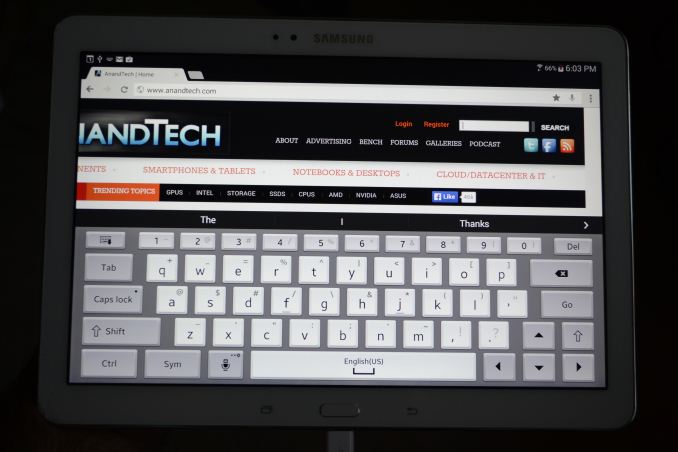
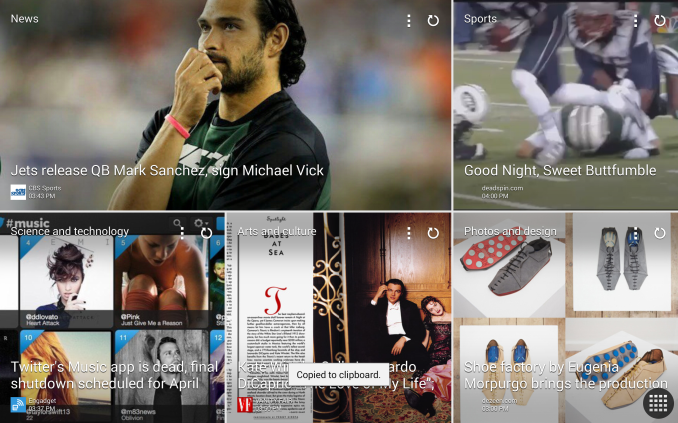
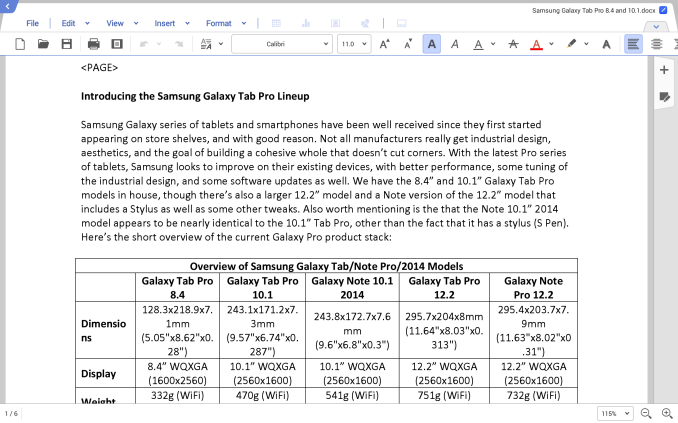
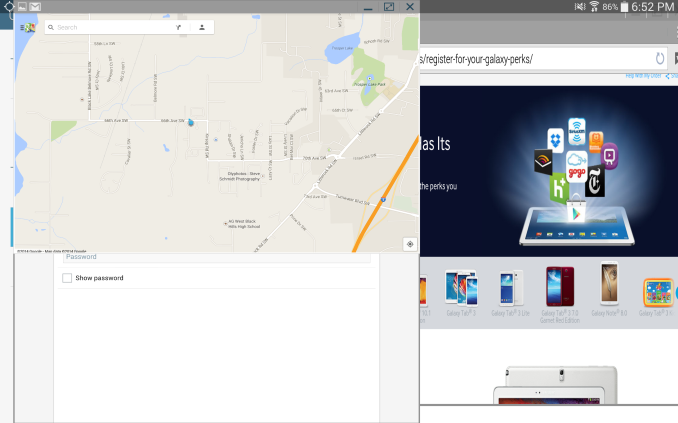
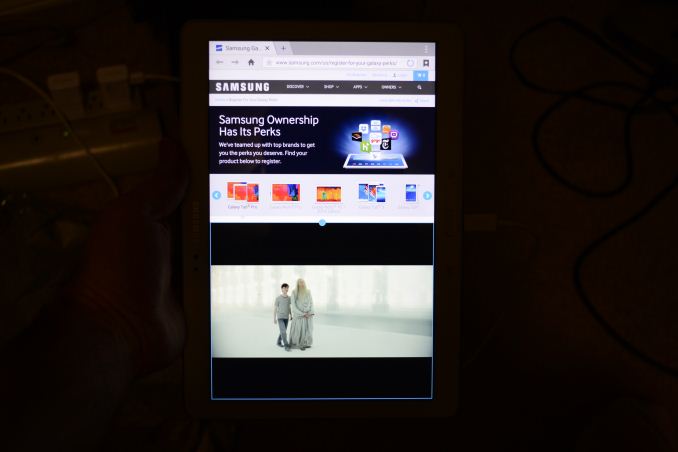
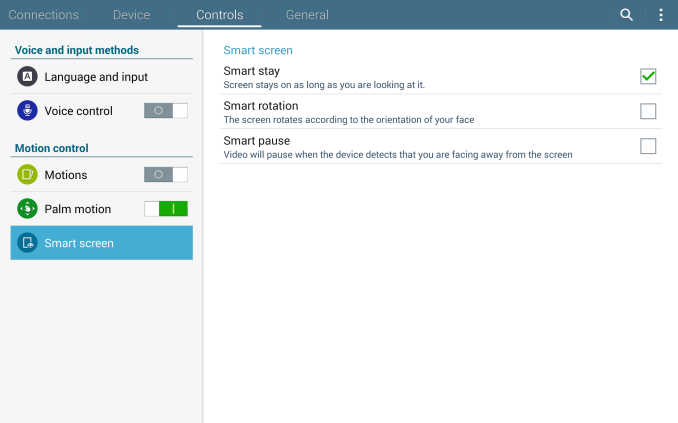
_thumb.png)
_thumb.png)
_thumb.png)
_thumb.png)
_thumb.png)
_thumb.png)








125 Comments
View All Comments
Death666Angel - Wednesday, March 26, 2014 - link
True, Apple devices sell for more on the 2nd market. But considering that they also cost usually 600€ or more (I remember a time when non-contract iPhones were 800€), you also pay a lot more up front. I've paid 500€ for a Galaxy S2 because I imported it from the UK and got it as one of the first in Europe. I ended up selling it for 180€ 18 months later. An iPhone would have cost me about the same (320€, taking the upfront price and subtracting the resell price). But that is a rubbish deal either way. I'm not going to spend more than 350€ for a phone these days. Resell value or not. And I also know a lot of people who have rubbish iPhones (mostly 4 and 4s) that keep rebooting randomly, have bad battery life, weird issues. They can't resell those for more than 50€. And they are all out of warranty of course. So really, you are making an anecdotal argument, that will only be true for some people and for a lot of others it won't.ESC2000 - Friday, March 28, 2014 - link
See my post below - just checked what the iPad 4 and the nexus 7 2013 would command on amazon and in both cases it was 65% of the MSRP. It makes sense that apple products from three years ago command more than android products from three years ago bc all apple products were better then but they aren't anymore so expect to see the resale values gap closing. There is still some downward pressure on the resale value of Android (and Windows) products bc there are more models and more devices period.Also anyone who would pay $350 for an iPhone 4 is just stupid, I'm sorry. I get platform dedication blah blah blah but when you could have a new nexus 5 for the same price it's time to let go of brand allegiance.
ESC2000 - Friday, March 28, 2014 - link
Btw I just went and checked amazon and either your price aren't representative or you're lying. Both devices on there are going for about $200 used (assuming the iPhone didn't have like 64 GB storage while the note had 16 or something). NEW iPhone 4s were going for $350. Nice try LOL. Here it is for everyone to see:http://www.amazon.com/Samsung-Galaxy-Note-SGH-i717...
http://www.amazon.com/Apple-iPhone-4S-16GB-White/d...
StrangerGuy - Saturday, March 22, 2014 - link
The only performance benchmark that only matters these days is the eMMC speed. Who cares about how much bazillion FPS in 3D when everything else stutters everywhere.UltraWide - Sunday, March 23, 2014 - link
So very true!jasonelmore - Monday, March 24, 2014 - link
and RAM. RAM dictates how long the device will be servicable and recieve updates. Apple's ipad line is gimped by their 1GB of RAM. They did it on purpose. 2 years from now, the device will start going slow because apple's 2014-2015 devices will all have 2GB or even 4GB of ram, which in turn, makes app developers use more of it. My ipad air's keyboard is stupidly slow to react to typing thanks to its horrible memory bandwidth on a almost 3 MP screen.akdj - Monday, March 24, 2014 - link
May wanna get it checked out. 7.1 made MASSIVE leaps forward with a 'brand new' rewrite of OS7. I've got three Airs and four iPad 4s. All are incredibly responsive, no crashing and fast as hell (we run an audio/video production company.ESC2000 - Tuesday, March 25, 2014 - link
Well then you are in the minority bc the three ipad air /retina ipad minis in my house regularly crash, a couple times a week, usually in safari. They also randomly reboot. I've teased my family about it bc my $230 nexus 7 (2013) is more reliable than their $400+ ipads. I've also sat them down next to each other and the screen and responsiveness of the nexus 7 matches the ipads despite being so much cheaper.I think the low amount of RAM in the ipads is contributing to the crashing. When I had an iPhone I was limited to eight tabs in safari which I assumed was bc it didn't have the internal memory to handle more. I've heard that the new ios update fixes the crashing and rebooting problem (which we know is real btw bc apple copped to it and claimed to be fixing it).
And the person who was claiming that all apple products have better resale value - that was true in the apple's edge is eroding. Three years ago apple products were objectively ahead of Android products so, fast fwd a few years to last year or this year when you're reselling them, and you see that apple products command a higher amount of money. But if you're talking about products released a year ago, Apple was no longer decisively the best phone or tablet manufacturer, so the gap has started to close. I just compared the price a used nexus 7 2013 and a used ipad 4 were going for on amazon and they were both going for around 65% of their original price.
Vigneshj - Sunday, March 23, 2014 - link
Will Samsung be releasing AMOLED display on tablet..? Watching movies/netflix can be a treat in AMOLED in large displays.StrangerGuy - Sunday, March 23, 2014 - link
Screw AMOLED? I'm far more concerned about the Pentile 2 subpixels per pixel shenanigans invading the LCD space here, from Samsung no less. I'm surprised the reviewer didn't even touch upon this.